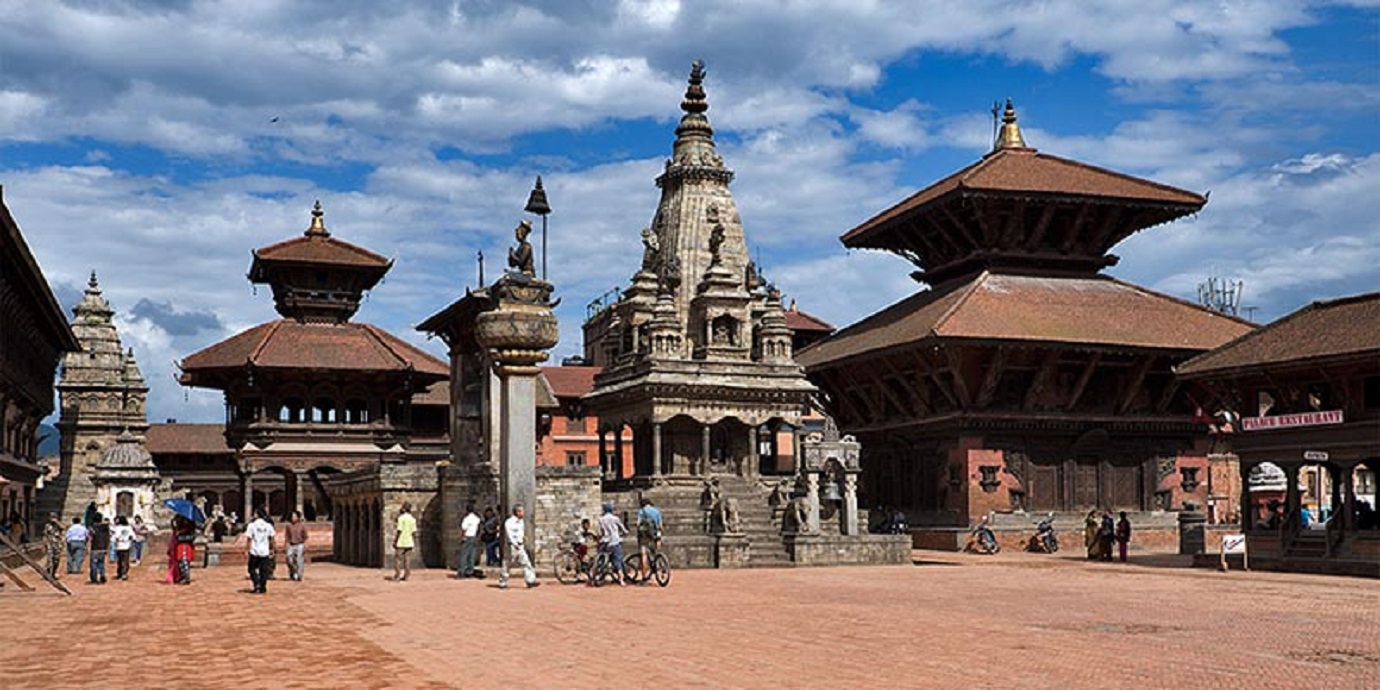Table of Contents
Introduction
Nepal, nestled in the heart of the Himalayas, is not just a land of breathtaking natural beauty but also a treasure trove of history and culture. Its rich historical heritage spans ancient civilizations, medieval kingdoms, and religious legacies, making it a compelling destination for historical tours. In this guide, we’ll delve into the captivating historical tours that Nepal offers, each offering a unique perspective on the country’s vibrant past and cultural tapestry. From UNESCO World Heritage Sites to ancient pilgrimage centers and preserved medieval towns, these historical tours promise a journey through time and a deeper understanding of Nepal’s diverse heritage. Let’s embark on a fascinating exploration of historical Nepal.
Brief Overview of Historical Tours in Nepal
Nepal boasts a rich and diverse historical heritage that dates back thousands of years. The country’s history is characterized by a tapestry of civilizations, dynasties, religions, and cultures that have flourished in this region. One of the earliest known civilizations in Nepal was the Kirat Kingdom, followed by the Lichhavi and Malla dynasties, each leaving behind significant architectural, artistic, and cultural legacies.
The medieval period saw the rise of powerful kingdoms like Kathmandu Valley’s Newar kingdoms, the Gurkha Kingdom, and the unified Kingdom of Nepal under the Shah dynasty. These periods witnessed the construction of magnificent palaces, temples, stupas, and monasteries that still stand as testaments to Nepal’s historical grandeur.
Religiously, Nepal is a melting pot of Hinduism and Buddhism, with sacred sites like Pashupatinath Temple, Swayambhunath Stupa, and Lumbini (the birthplace of Lord Buddha) attracting pilgrims and scholars from around the world.
Importance of Historical Tours in Understanding Nepal’s Culture and Heritage
Historical tours play a pivotal role in unraveling Nepal’s rich culture and heritage. They offer immersive experiences that allow travelers to step back in time and witness the evolution of Nepalese civilization firsthand. By exploring ancient cities, monuments, and archaeological sites, visitors gain insights into the artistic, architectural, and religious achievements of bygone eras.
Moreover, historical tours provide a deeper understanding of Nepal’s cultural diversity. From the Newari architecture of Bhaktapur Durbar Square to the Tibetan Buddhist monasteries of Mustang, each region offers distinct cultural nuances that contribute to Nepal’s vibrant tapestry.
These tours also foster cultural exchange and appreciation. Interactions with local communities, participation in traditional rituals, and visits to heritage sites promote cross-cultural understanding and respect for Nepal’s cultural heritage.
Ultimately, historical tours in Nepal offer not just a glimpse into the past but also a profound appreciation for the enduring legacy that continues to shape the country’s identity and soul.
Kathmandu Valley Heritage Tour
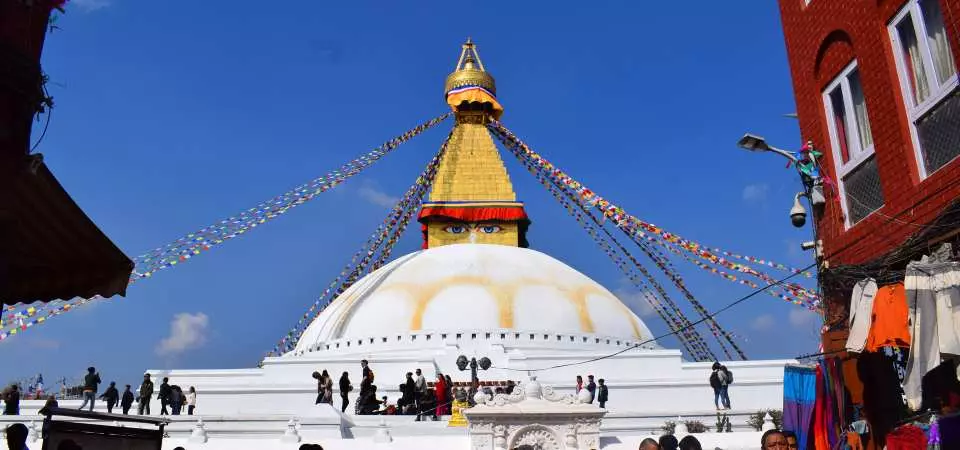
The Kathmandu Valley Heritage Tour is a captivating journey into Nepal’s rich cultural and historical tapestry. This tour takes visitors through the UNESCO World Heritage Sites scattered across the Kathmandu Valley, each site bearing witness to centuries of architectural, religious, and artistic brilliance. One of the highlights of this tour is Swayambhunath Stupa, also known as the Monkey Temple, a sacred Buddhist site adorned with intricate carvings, prayer flags, and the watchful eyes of the Buddha. Pashupatinath Temple, dedicated to Lord Shiva, is another significant stop on this tour, offering a glimpse into Hindu rituals and spiritual practices along the banks of the Bagmati River.
The tour also includes Boudhanath Stupa, one of the largest stupas in Nepal and a hub of Tibetan Buddhism in Kathmandu. Its massive dome, adorned with prayer wheels and colorful flags, creates a serene ambiance for contemplation and cultural immersion. Lastly, Patan Durbar Square, located in the ancient city of Lalitpur, showcases exquisite Newari architecture, palaces, temples, and the renowned Krishna Mandir. The Kathmandu Valley Heritage Tour is not just a historical exploration but also a spiritual and cultural odyssey that unveils the essence of Nepal’s heritage.
Description of UNESCO World Heritage Sites in Kathmandu Valley
- Swayambhunath Stupa: Also known as the Monkey Temple, Swayambhunath Stupa is a revered Buddhist site perched atop a hill in Kathmandu. Its iconic white dome adorned with the watchful eyes of the Buddha overlooks the valley, offering panoramic views. The stupa is surrounded by smaller shrines, prayer flags fluttering in the breeze, and playful monkeys, adding to its mystical allure.
- Pashupatinath Temple: Situated on the banks of the Bagmati River, Pashupatinath Temple is one of the most sacred Hindu temples in Nepal dedicated to Lord Shiva. The temple complex is a bustling hub of religious activities, with Sadhus (holy men) meditating, pilgrims bathing in the river, and cremation ghats where Hindu funeral rites are performed.
- Boudhanath Stupa: Boudhanath Stupa is an imposing structure and a focal point of Tibetan Buddhism in Kathmandu. Its massive white dome is adorned with colorful prayer flags and the all-seeing eyes of the Buddha. The stupa is surrounded by monasteries, shops selling Tibetan artifacts, and devotees performing kora (circumambulation) around the stupa.
- Patan Durbar Square: Located in the ancient city of Lalitpur, Patan Durbar Square is a masterpiece of Newari architecture and artistry. The square is adorned with intricately carved temples, palaces, courtyards, and statues, reflecting the rich cultural heritage of the Malla dynasty. The Krishna Mandir, a stone temple dedicated to Lord Krishna, is a prominent highlight of this square.
Historical Significance and Cultural Insights at Each Site
- Swayambhunath Stupa: With origins dating back over 2,000 years, Swayambhunath Stupa is not only a symbol of Buddhist spirituality but also a testament to Nepal’s ancient religious heritage. Visitors can witness Buddhist rituals, spin prayer wheels, and gain insights into the harmonious coexistence of Buddhism and Hinduism in Nepal.
- Pashupatinath Temple: This temple holds immense historical and religious significance as one of the holiest Shiva temples globally. It serves as a center for pilgrimage, where devotees seek blessings, participate in religious festivals like Maha Shivaratri, and experience the deep-rooted traditions of Hinduism.
- Boudhanath Stupa: As one of the largest stupas in Nepal, Boudhanath is a symbol of Tibetan Buddhist culture and heritage. Visitors can engage in meditation practices, observe monks performing rituals, and explore the vibrant Tibetan community surrounding the stupa, gaining insights into Tibetan Buddhism’s influence in the region.
- Patan Durbar Square: This UNESCO site is a living museum of Newari architecture and craftsmanship. The intricately carved wooden structures, ancient temples, and palace complexes showcase the artistic prowess of the Malla kings and provide a glimpse into Nepal’s medieval history and cultural heritage.
Each of these UNESCO World Heritage Sites in Kathmandu Valley offers a unique blend of historical significance, spiritual depth, and cultural richness, making them must-visit destinations for travelers seeking to unravel Nepal’s captivating heritage.
Lumbini Tour
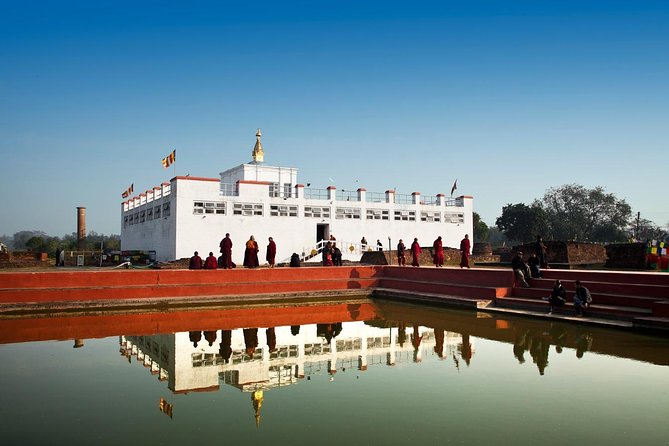
The Lumbini Tour is a profound journey to the birthplace of Lord Buddha, located in the Rupandehi district of Nepal. This sacred pilgrimage site holds immense significance for Buddhists worldwide, drawing pilgrims, scholars, and curious travelers seeking spiritual enlightenment and historical insights. The centerpiece of the Lumbini Tour is the Mayadevi Temple, built at the exact spot where Queen Mayadevi is said to have given birth to Siddhartha Gautama, who later became the Buddha. The temple houses the ancient stone marker indicating the birthplace, providing a tangible connection to the revered origins of Buddhism.
Apart from the Mayadevi Temple, the Lumbini Tour encompasses various monasteries, stupas, and archaeological ruins that offer glimpses into the ancient past and the spread of Buddhism across the region. The Ashoka Pillar, erected by Emperor Ashoka in the 3rd century BCE, stands as a testament to the historical patronage of Buddhism and serves as a symbol of peace and harmony. The serene ambiance of Lumbini, with its sacred Bodhi tree and tranquil surroundings, creates a conducive atmosphere for introspection, meditation, and a deeper understanding of the Buddha’s teachings.
Birthplace of Lord Buddha
Lumbini holds the distinction of being the birthplace of Siddhartha Gautama, who later became known as Lord Buddha, the founder of Buddhism. According to Buddhist tradition, Queen Mayadevi gave birth to Siddhartha under a sal tree in the gardens of Lumbini, marking the beginning of his spiritual journey towards enlightenment. This historical significance makes Lumbini a revered pilgrimage site for Buddhists worldwide, drawing devotees and visitors seeking to pay homage to the birthplace of one of the world’s most influential spiritual leaders.
Main Attractions such as the Mayadevi Temple and Ashoka Pillar
The Mayadevi Temple stands as the focal point of the Lumbini Tour, built around the sacred site believed to be the exact location of Lord Buddha’s birth. Inside the temple, visitors can witness the ancient stone marker known as the Nativity Sculpture, depicting Queen Mayadevi holding the branch of a sal tree while giving birth to Siddhartha Gautama. The temple complex also includes archaeological remains dating back to the 3rd century BCE, providing insights into the historical significance of Lumbini.
Another notable attraction is the Ashoka Pillar, erected by Emperor Ashoka in the 3rd century BCE to commemorate his pilgrimage to Lumbini. The pillar bears inscriptions detailing Ashoka’s reverence for Buddha and his teachings, making it a crucial historical artifact that highlights the early spread of Buddhism and the patronage of ancient rulers towards the faith.
Pilgrimage Importance and Historical Context
Lumbini holds immense pilgrimage importance for Buddhists, symbolizing the birth of their spiritual leader and the beginning of his noble path towards enlightenment. Pilgrims from various Buddhist traditions visit Lumbini to pay their respects, meditate under the Bodhi tree, and partake in religious rituals that connect them to the essence of Buddha’s teachings on compassion, wisdom, and inner peace.
From a historical perspective, Lumbini’s significance extends beyond religious devotion. It serves as a living heritage site that sheds light on ancient civilizations, the spread of Buddhism across Asia, and the cultural exchanges that shaped the region’s religious landscape. The presence of archaeological relics, sacred monuments, and the tranquil ambiance of Lumbini contribute to its status as a UNESCO World Heritage Site and a place of profound historical and spiritual significance.
Pokhara Historical Walk
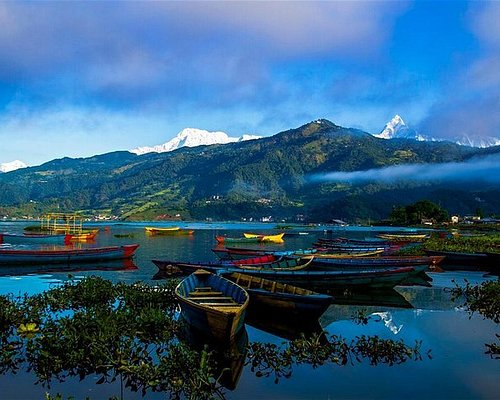
The Pokhara Historical Walk offers a captivating journey through the cultural and historical tapestry of Pokhara, a picturesque city nestled in the foothills of the Annapurna range in Nepal. This walking tour allows visitors to explore the rich heritage of Pokhara while soaking in its stunning natural beauty. One of the main attractions on this historical walk is the Old Bazaar, a vibrant market where traditional Nepali crafts, textiles, and local delicacies are showcased, providing a glimpse into Pokhara’s commercial and cultural past.
As the walk continues, visitors can delve into the spiritual realm with a visit to Bindhyabasini Temple, dedicated to the Hindu goddess Durga. This ancient temple is not only a place of worship but also a cultural hub where festivals and rituals bring the community together in celebration. The historical walk also includes a visit to the Gurkha Museum, which offers insights into the legendary Gurkha soldiers and their contributions to Nepali history and military prowess.
Overall, the Pokhara Historical Walk is a delightful blend of history, culture, and scenic beauty, offering a deeper appreciation for Pokhara’s multifaceted heritage and the vibrant spirit of its people.
Exploration of Pokhara’s Historical Landmarks
- Old Bazaar: The Old Bazaar in Pokhara is a bustling marketplace that echoes with centuries of trade and cultural exchanges. Here, visitors can wander through narrow alleys lined with traditional Newari architecture and explore a vibrant array of shops selling local handicrafts, spices, clothing, and souvenirs. The lively atmosphere, filled with the sounds of bargaining and the aroma of local cuisine, provides a glimpse into Pokhara’s historical role as a trading hub and a melting pot of diverse cultures.
- Bindhyabasini Temple: Nestled on a hilltop overlooking Pokhara Valley, Bindhyabasini Temple is a revered Hindu shrine dedicated to Goddess Durga. The temple’s ancient architecture, intricate carvings, and religious ceremonies draw devotees and tourists alike. The panoramic views of Pokhara from the temple premises add to the spiritual ambiance, making it a serene and culturally significant site.
- Gurkha Museum: The Gurkha Museum is a fascinating stop on the historical tour of Pokhara, showcasing the rich military history and legacy of the Gurkha soldiers. Exhibits within the museum include historical artifacts, uniforms, weapons, and displays detailing the bravery and contributions of Gurkha soldiers to various conflicts and peacekeeping missions. Visitors can learn about the Gurkha recruitment process, training regimens, and the indomitable spirit that has made Gurkhas renowned worldwide.
Historical Background of Pokhara and Its Significance
Pokhara, often referred to as the “Gateway to the Annapurna Circuit,” holds immense historical significance as a key trading center along ancient trade routes between Tibet and India. Its strategic location on the banks of the Seti River and its proximity to the Himalayas have attracted traders, pilgrims, and adventurers for centuries, shaping Pokhara’s cultural identity and economic prosperity.
The city’s historical background is intertwined with legends, folklore, and archaeological remnants that speak of its past as a prosperous trading post and a center of religious pilgrimage. Pokhara’s diverse ethnic communities, including Newars, Gurungs, Thakalis, and Tibetans, contribute to its cultural richness and heritage, reflected in its architecture, festivals, cuisine, and traditions.
Today, Pokhara continues to enchant visitors with its blend of natural beauty, cultural heritage, and adventure tourism opportunities. Its historical landmarks serve as windows into the past, offering insights into Pokhara’s evolution from a small trading town to a vibrant tourist destination that celebrates its history while embracing modernity.
Bhaktapur Durbar Square Tour
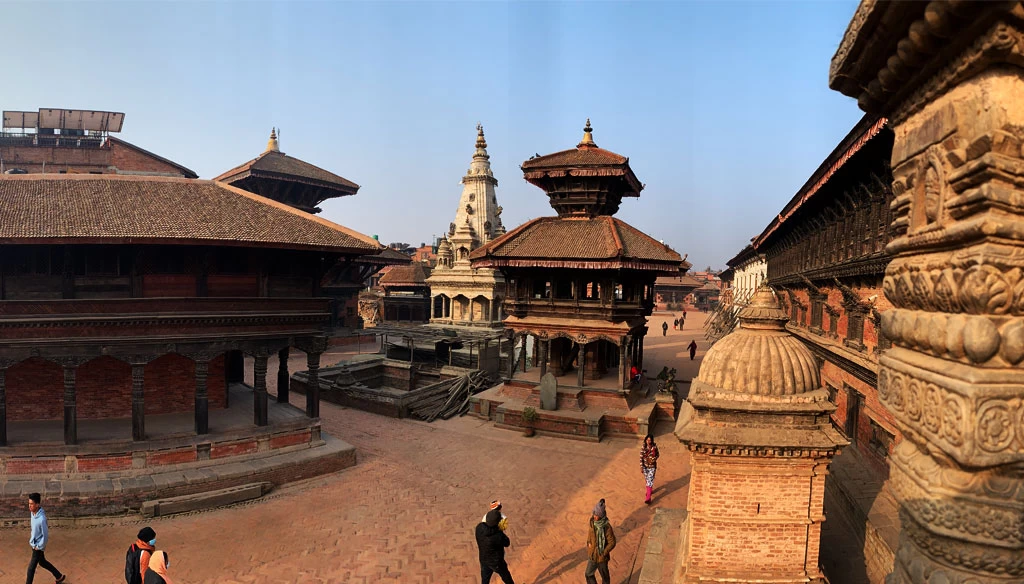
Embarking on a Bhaktapur Durbar Square Tour is akin to stepping into a living museum of medieval art, culture, and architecture. Situated in the heart of Bhaktapur, one of the ancient kingdoms in the Kathmandu Valley, this UNESCO World Heritage Site is a treasure trove of historical landmarks that reflect the grandeur of Nepal’s past. The square is adorned with intricately carved wooden temples, palaces, statues, and courtyards, showcasing the architectural prowess of the Newar artisans and the artistic fusion of Hindu and Buddhist motifs.
One of the main attractions of the Bhaktapur Durbar Square Tour is the Nyatapola Temple, a towering pagoda temple dedicated to the goddess Siddhi Lakshmi. With its five-tiered structure, ornate carvings, and guardian figures, Nyatapola Temple stands as a testament to the ancient engineering and artistic skills of the Newar craftsmen. Another highlight is the 55-Window Palace, a marvel of medieval architecture adorned with exquisite woodwork, lattice windows, and intricate details that provide insights into the royal lifestyle and cultural heritage of Bhaktapur. As visitors stroll through the cobblestone streets and alleys of Bhaktapur Durbar Square, they are transported back in time, surrounded by a living tableau of Nepal’s rich historical legacy.
UNESCO World Heritage Site
Bhaktapur Durbar Square is a UNESCO World Heritage Site located in Bhaktapur, Nepal. This designation recognizes the square’s exceptional cultural and historical significance, preserving its unique architectural heritage for future generations to appreciate and cherish.
Notable Structures and Architecture
- Nyatapola Temple: One of the most iconic landmarks within Bhaktapur Durbar Square is the Nyatapola Temple, a magnificent five-story pagoda temple dedicated to Siddhi Lakshmi. Built in 1702 during the reign of King Bhupatindra Malla, this temple stands as the tallest pagoda in Nepal, showcasing stunning architectural details and intricate wood carvings. The temple’s name, “Nyatapola,” translates to “five-story,” symbolizing strength and stability.
- Palaces and Temples within the Square: Bhaktapur Durbar Square is adorned with a plethora of palaces, temples, shrines, and courtyards that reflect the rich artistic and cultural heritage of the Malla dynasty. The 55-Window Palace, also known as Pachpanna Jhyale Durbar, is a notable structure showcasing traditional Newari architecture with its intricately carved wooden windows and doors. Other significant temples within the square include the Vatsala Temple, dedicated to the goddess Vatsala Devi, and the Bhairava Nath Temple, dedicated to the fierce deity Bhairava.
Historical and Cultural Importance of Bhaktapur
Bhaktapur holds immense historical and cultural importance as one of the three medieval city-states in the Kathmandu Valley, alongside Kathmandu and Patan. The city’s name, “Bhaktapur,” means “City of Devotees,” reflecting its deep-rooted religious traditions and spiritual heritage. Bhaktapur Durbar Square served as the royal seat of the Malla kings, who patronized art, architecture, and culture, leaving behind a legacy of stunning monuments and architectural marvels.
The square not only represents the architectural brilliance of the Newari craftsmen but also serves as a living testament to Nepal’s cultural diversity and religious syncretism. Visitors to Bhaktapur Durbar Square can immerse themselves in the city’s vibrant festivals, rituals, and traditional practices, gaining a deeper understanding of Nepal’s rich historical tapestry and the enduring legacy of its ancient kingdoms.
Gorkha Tou
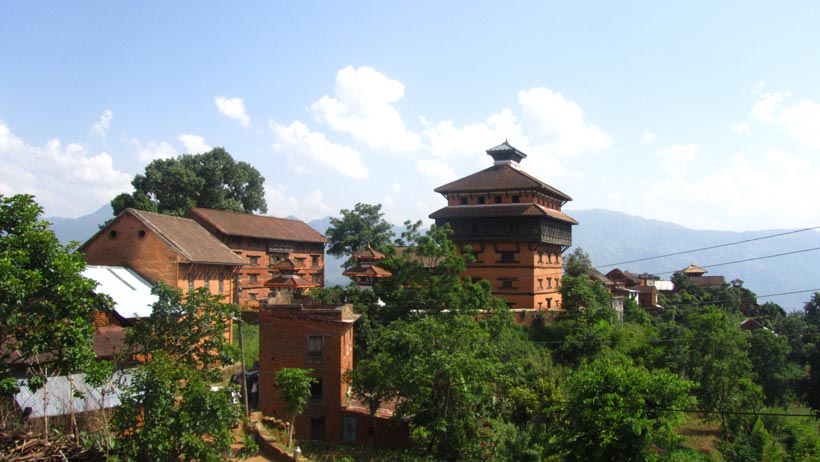
Embarking on a Gorkha Tour is a journey into the heart of Nepal’s history and heritage, centered around the historic town of Gorkha, which holds immense significance as the birthplace of Prithvi Narayan Shah, the founder of modern Nepal. The tour typically includes a visit to the Gorkha Durbar, a hilltop fortress that served as the seat of power for the Shah dynasty and played a pivotal role in Nepal’s unification. The Gorkha Durbar showcases traditional Newari architecture, fortified walls, temples, and the iconic Gorkha Palace, offering panoramic views of the surrounding Himalayan landscape.
Aside from the Gorkha Durbar, the tour often includes exploration of cultural and religious sites such as the Gorakhnath Temple, dedicated to Guru Gorakhnath, a revered saint in Hinduism and Buddhism. The temple’s architecture and religious significance add depth to the tour, providing insights into the spiritual heritage of Gorkha. Additionally, the tour may include visits to local markets, museums, and viewpoints where travelers can immerse themselves in the vibrant culture, traditions, and historical legacy of Gorkha.
Birthplace of Prithvi Narayan Shah
Gorkha holds the honor of being the birthplace of Prithvi Narayan Shah, the visionary leader who unified the fragmented kingdoms of Nepal into a single nation. Born in the historic township of Gorkha in 1723, Prithvi Narayan Shah’s legacy as a statesman and strategist is deeply intertwined with the town’s history, making it a revered destination for those interested in Nepal’s unification era.
Gorkha Durbar and Its Historical Significance
The Gorkha Durbar stands as a testament to Nepal’s rich historical heritage and the seat of power for the Shah dynasty. Perched atop a hill, the durbar (palace) complex includes fortified walls, temples, courtyards, and the iconic Gorkha Palace. This stronghold played a crucial role in shaping Nepal’s history, serving as a strategic center for military campaigns and governance during Prithvi Narayan Shah’s reign. The architecture of the Gorkha Durbar reflects traditional Newari design elements, showcasing intricate woodwork, stone carvings, and historical artifacts that offer insights into Nepal’s medieval era.
Panoramic Views of the Himalayas and Cultural Insights
One of the highlights of a Gorkha Tour is the breathtaking panoramic views of the Himalayan range that can be enjoyed from vantage points near the Gorkha Durbar. The majestic peaks, including Manaslu and Annapurna, provide a stunning backdrop to Gorkha’s historical ambiance, creating a memorable experience for visitors. Additionally, the tour offers cultural insights into Gorkha’s vibrant heritage through interactions with local communities, visits to sacred sites like the Gorakhnath Temple, and a deeper understanding of the customs, traditions, and folklore that define Gorkha’s cultural identity.
Bandipur Heritage Walk
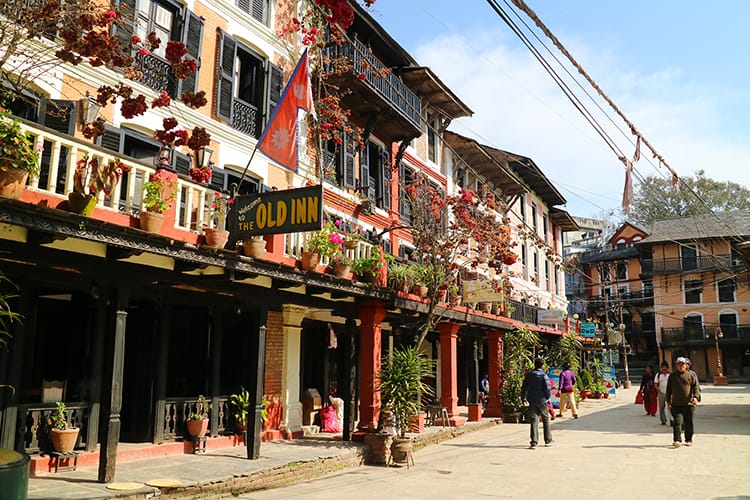
Embarking on a Bandipur Heritage Walk is a delightful journey into the preserved medieval town of Bandipur, nestled in the hills of central Nepal. This charming town, known for its well-preserved Newari architecture, cobblestone streets, and panoramic views of the Himalayas, offers a unique glimpse into Nepal’s cultural and historical heritage. The Heritage Walk typically includes exploring the town’s main attractions, such as the Khadga Devi Temple, a sacred Hindu shrine adorned with intricate wood carvings and religious motifs that reflect the craftsmanship of the Newari artisans.
As visitors stroll through Bandipur’s narrow alleys and alleys, they encounter traditional Newari houses, ancient temples, and bustling marketplaces that transport them back in time. The Heritage Walk also provides opportunities to engage with the local community, learn about their customs and traditions, and witness daily life in this picturesque town. From panoramic viewpoints like Tundikhel, travelers can marvel at sweeping vistas of the Himalayan peaks, adding a scenic element to the cultural immersion of the Bandipur Heritage Walk.
Medieval town with Newari architecture
Bandipur is a captivating medieval town that showcases the timeless charm of Newari architecture, characterized by intricately carved wooden windows, ornate doorways, and traditional brick buildings. The town’s well-preserved heritage buildings, some dating back to the 18th century, line its cobblestone streets, creating a picturesque setting that transports visitors to a bygone era. Bandipur’s Newari architecture is a testament to the skilled craftsmanship and artistic sensibilities of the Newar community, reflecting a harmonious blend of Hindu and Buddhist influences in its design and construction.
Key attractions such as Khadga Devi Temple
One of the key attractions of Bandipur is the Khadga Devi Temple, a sacred Hindu shrine dedicated to Goddess Khadga Devi. This temple is renowned for its exquisite wood carvings, intricate artwork, and religious significance, attracting devotees and tourists alike. The temple’s serene ambiance, adorned with prayer flags and ancient sculptures, offers a spiritual retreat for visitors seeking moments of reflection and cultural immersion. The Khadga Devi Temple stands as a symbol of Bandipur’s religious heritage and architectural prowess, inviting exploration and admiration from all who visit.
Traditional lifestyle and cultural experiences
Bandipur provides a glimpse into Nepal’s traditional lifestyle and cultural experiences, offering visitors a chance to engage with the local community and participate in authentic cultural practices. From interacting with friendly locals in the town square to savoring traditional Newari cuisine at local eateries, every aspect of Bandipur exudes warmth and hospitality. Cultural activities such as observing local festivals, learning traditional crafts like pottery or weaving, and exploring the town’s markets filled with handicrafts and souvenirs, enhance the cultural immersion and enrich the travel experience in Bandipur. The town’s tranquil ambiance, coupled with its rich cultural heritage, creates a memorable and enriching journey for travelers seeking a deeper connection with Nepal’s cultural tapestry.
Tansen Heritage Tour
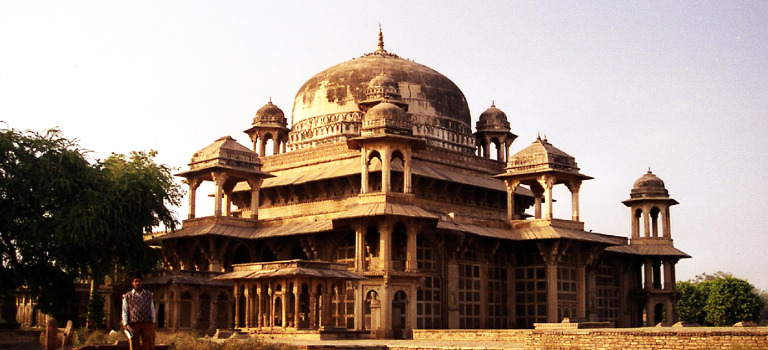
The Tansen Heritage Tour offers a captivating exploration of the ancient hill town of Tansen, located in the Palpa district of Nepal. This tour takes visitors on a journey through time, showcasing Tansen’s rich historical and cultural heritage. The town is renowned for its well-preserved medieval architecture, Newari craftsmanship, and panoramic views of the surrounding hills and mountains. As part of the Heritage Tour, visitors can wander through Tansen’s narrow cobbled streets, lined with traditional Newari houses adorned with intricately carved windows and doors that reflect the town’s artistic legacy.
One of the key attractions of the Tansen Heritage Tour is the Tansen Durbar, a historic palace complex that served as the administrative center during the reign of the Palpa kings. The durbar showcases a blend of Mughal, Indian, and Newari architectural styles, with ornate courtyards, temples, and palatial structures. Visitors can explore the durbar’s museum, which houses ancient artifacts, royal artifacts, and historical exhibits that provide insights into Tansen’s royal history and cultural heritage. Additionally, the tour includes visits to cultural sites like the Amar Narayan Temple and Shreenagar Hill, offering panoramic views of the Himalayas and immersive cultural experiences that highlight Tansen’s significance as a cultural gem in Nepal.
Ancient hill town with medieval architecture
Tansen is an enchanting ancient hill town that enchants visitors with its medieval architecture and timeless charm. Perched atop a hill in the Palpa district of Nepal, Tansen boasts a rich historical heritage that is reflected in its well-preserved buildings, cobbled streets, and traditional Newari craftsmanship. The town’s strategic location offers panoramic views of the surrounding hills and valleys, creating a picturesque backdrop for exploring its cultural and historical treasures.
Tansen Durbar and Amar Narayan Temple
The Tansen Heritage Tour includes visits to iconic landmarks such as the Tansen Durbar and Amar Narayan Temple. The Tansen Durbar, a historic palace complex, showcases exquisite Mughal, Indian, and Newari architectural styles, with intricately designed courtyards, temples, and royal chambers. Adjacent to the durbar is the Amar Narayan Temple, a sacred Hindu shrine known for its ancient stone carvings, religious significance, and serene ambiance. Together, these sites provide a glimpse into Tansen’s royal past and spiritual heritage, offering a blend of architectural marvels and cultural richness.
Scenic views and cultural immersion in Tansen
Scenic views and cultural immersion are integral parts of the Tansen Heritage Tour, allowing visitors to soak in the town’s natural beauty and vibrant culture. From vantage points like Shreenagar Hill, travelers can marvel at breathtaking views of the Himalayas, rolling hills, and terraced fields that characterize the landscape around Tansen. Cultural immersion activities such as interacting with locals, sampling traditional cuisine, and witnessing local festivals add depth to the tour, providing a holistic experience that combines scenic wonders with authentic cultural encounters. Tansen’s unique blend of history, architecture, and natural beauty makes it a captivating destination for travelers seeking both tranquility and cultural exploration in Nepal.
Kirtipur Historical Tour
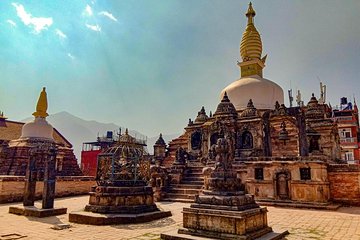
The Kirtipur Historical Tour invites travelers to explore the ancient hill town of Kirtipur, situated just southwest of Kathmandu in Nepal. This tour offers a journey back in time, delving into Kirtipur’s rich historical heritage, traditional Newari architecture, and cultural significance. The town’s hilltop location provides panoramic views of the Kathmandu Valley and the surrounding Himalayan peaks, adding to the allure of this historical gem.
A highlight of the Kirtipur Historical Tour is the Bagh Bhairav Temple, a sacred Hindu shrine dedicated to the ferocious deity Bhairav. This temple, adorned with intricate carvings and statues, attracts devotees and visitors seeking spiritual experiences. Additionally, the tour includes visits to cultural landmarks like Chilancho Stupa, which offers insights into Kirtipur’s Buddhist heritage and ancient traditions. Exploring Kirtipur’s narrow lanes, traditional Newari houses, and vibrant marketplaces provides a glimpse into daily life and cultural practices, making the Kirtipur Historical Tour a fascinating and immersive experience for travelers interested in Nepal’s rich history and cultural diversity.
Historic town near Kathmandu
. Kirtipur is a historic town nestled near Kathmandu, offering a glimpse into Nepal’s rich cultural and historical tapestry. Situated southwest of Kathmandu Valley, Kirtipur is renowned for its ancient charm, traditional Newari architecture, and strategic hilltop location that provides stunning views of the surrounding landscapes. This historic town has retained much of its original character, making it a captivating destination for those interested in exploring Nepal’s heritage beyond the bustling city of Kathmandu.
Bagh Bhairav Temple and Chilancho Stupa
The Kirtipur Historical Tour encompasses two significant landmarks that showcase the town’s religious and cultural heritage. The first is the Bagh Bhairav Temple, dedicated to the fearsome deity Bhairav, known for its intricate wood carvings and religious importance. This temple attracts devotees and visitors alike, offering insights into Nepal’s religious traditions and spiritual practices. The tour also includes a visit to Chilancho Stupa, an ancient Buddhist monument that reflects Kirtipur’s Buddhist heritage and serves as a symbol of peace and tranquility. These sites provide a deeper understanding of Kirtipur’s historical and cultural significance, adding depth to the tour’s exploration.
Traditional Newari culture and heritage preservation
Kirtipur’s Historical Tour offers a window into traditional Newari culture and the efforts to preserve Nepal’s rich heritage. The town’s well-preserved Newari architecture, with its intricately carved windows, doorways, and courtyards, reflects the artistic brilliance and craftsmanship of the Newar community. By exploring Kirtipur’s narrow alleys, ancient temples, and vibrant marketplaces, visitors gain insights into the daily life, customs, and cultural traditions that have been passed down through generations. The preservation of Kirtipur’s heritage is evident in its ongoing efforts to maintain historical buildings, promote traditional arts and crafts, and celebrate cultural festivals, making it a valuable destination for those interested in experiencing Nepal’s authentic cultural heritage.
Janakpur Cultural Tour
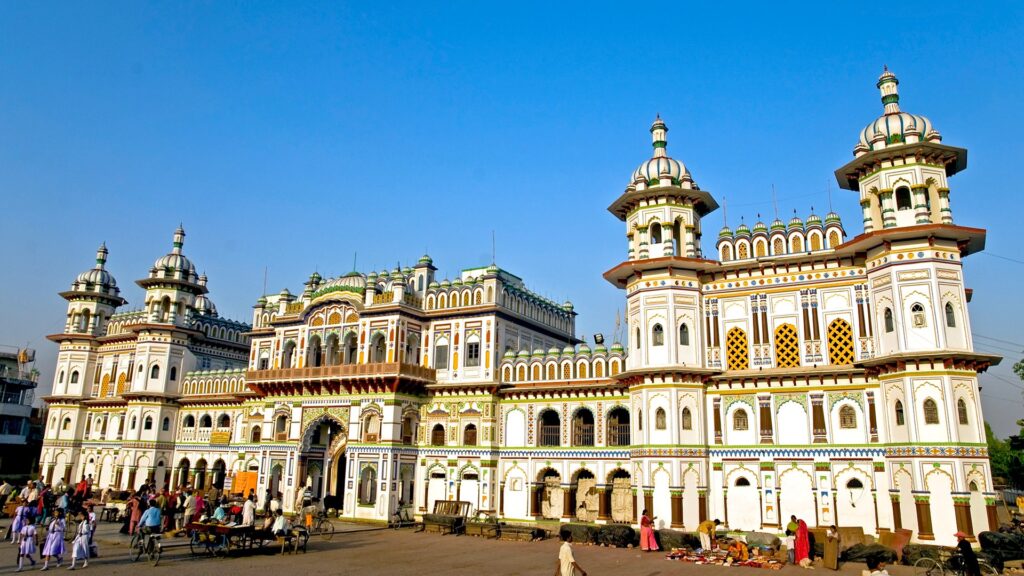
The Janakpur Cultural Tour offers a fascinating exploration of Janakpur, a city steeped in religious and cultural significance, located in the Terai region of Nepal. Known as the birthplace of Goddess Sita and the site of her marriage to Lord Ram, Janakpur holds immense importance for Hindu pilgrims and visitors seeking insights into Hindu mythology and traditions. The tour typically includes visits to iconic sites such as the Janaki Mandir, a majestic Hindu temple dedicated to Goddess Sita, featuring intricate architecture, colorful artwork, and religious ceremonies that immerse visitors in the spiritual ambiance of the place.
Apart from the Janaki Mandir, the Janakpur Cultural Tour offers glimpses into the city’s vibrant cultural heritage through interactions with local artisans, musicians, and performers who showcase traditional folk arts, music, and dance forms. Visitors can explore Janakpur’s bustling markets, sample authentic Terai cuisine, and witness colorful festivals that celebrate the region’s cultural diversity. The tour provides a deeper understanding of Janakpur’s historical roots, religious significance, and the enduring legacy of the Ramayana epic, making it a captivating journey for those interested in Nepal’s cultural tapestry.
Birthplace of Goddess Sita
Janakpur holds the esteemed title of being the birthplace of Goddess Sita, a central figure in Hindu mythology and the epic Ramayana. This sacred city in the Terai region of Nepal is steeped in the rich tapestry of Hindu beliefs and legends, making it a revered pilgrimage site for devotees and a cultural gem for those interested in ancient mythology and spirituality.
Janaki Temple and Ram Mandir
The Janakpur Cultural Tour encompasses two prominent religious landmarks that epitomize the city’s spiritual significance. The Janaki Temple, also known as Janaki Mandir, is a grand Hindu temple dedicated to Goddess Sita. Its ornate architecture, intricate carvings, and vibrant artwork depict scenes from the Ramayana, offering visitors a glimpse into the epic saga of Lord Ram and Goddess Sita. Additionally, the Ram Mandir, dedicated to Lord Ram, complements the Janaki Temple as a place of worship and pilgrimage, symbolizing the divine union of Ram and Sita.
Vibrant Maithili culture and religious significance
The Janakpur Cultural Tour provides insights into the vibrant Maithili culture and the deep-rooted religious significance of Janakpur. The city is a hub of Maithili traditions, art, music, and dance, with local artisans showcasing their craftsmanship in pottery, woodwork, and handloom textiles. Visitors can immerse themselves in the colorful festivities of Maithili festivals, experience traditional Maithili cuisine, and witness cultural performances that celebrate the region’s heritage. Janakpur’s religious and cultural significance as the birthplace of Goddess Sita and its association with the Ramayana epic make it a captivating destination for exploring Nepal’s diverse cultural landscape and spiritual heritage.
Mustang Historical Trek
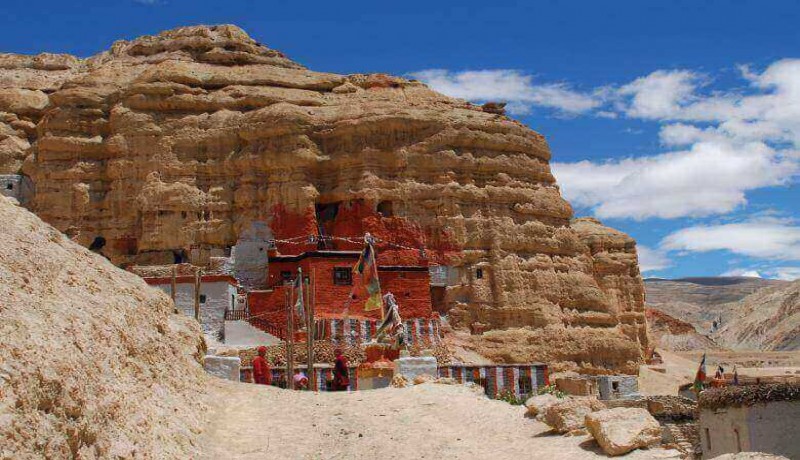
The Mustang Historical Trek offers a captivating journey into the ancient kingdom of Mustang, located in the remote Himalayan region of Nepal. This trek combines breathtaking landscapes, rich cultural heritage, and historical landmarks, making it a unique and rewarding experience for adventurous travelers. The region of Mustang, often referred to as the “Forbidden Kingdom,” is renowned for its well-preserved Tibetan Buddhist culture, ancient monasteries, and rugged terrain that transports visitors back in time.
One of the highlights of the Mustang Historical Trek is the exploration of historical sites such as the walled city of Lo Manthang, a UNESCO World Heritage Site. Lo Manthang, with its ancient mud-brick buildings, narrow alleyways, and majestic palace, offers a glimpse into Mustang’s royal past and traditional way of life. The trek also includes visits to centuries-old monasteries like Thubchen Gompa and Jampa Lhakhang, where travelers can witness exquisite murals, sacred artifacts, and Buddhist rituals that have been preserved for generations. Overall, the Mustang Historical Trek combines adventure, history, and cultural immersion, providing an unforgettable experience in one of Nepal’s most intriguing regions.
Adventure tour exploring ancient caves and monasteries
Embark on an exhilarating adventure with the Mustang Historical Trek, delving into the hidden treasures of ancient caves and monasteries that dot the rugged landscape of Mustang, Nepal. This unique tour offers a thrilling exploration of historical sites that are steeped in centuries-old mystique and cultural significance. As you traverse the rugged terrain, you’ll encounter ancient cave dwellings carved into cliffsides, serving as testament to the region’s rich history and the ingenuity of its inhabitants.
The trek also takes you to majestic monasteries nestled amidst towering mountains, including the iconic Thubchen Gompa and Jampa Lhakhang. These ancient monastic complexes, adorned with intricate murals, sacred relics, and prayer halls, provide a spiritual retreat and offer insights into Mustang’s deep-rooted Tibetan Buddhist heritage. The adventure aspect of the tour adds a thrilling dimension, as you navigate through breathtaking landscapes, cross suspension bridges over roaring rivers, and immerse yourself in the rugged beauty of Mustang’s wilderness. Overall, the Mustang Historical Trek is a blend of adventure and cultural discovery, offering a once-in-a-lifetime experience exploring ancient caves and monasteries in this enchanting Himalayan kingdom.
Lo Manthang walled city and Mustang Palace
The Lo Manthang walled city and Mustang Palace stand as timeless testaments to the rich cultural heritage and royal legacy of the Mustang region in Nepal. The walled city of Lo Manthang, an integral part of the Mustang Historical Trek, encapsulates centuries of history within its fortified walls. As you enter through the ancient gates, you step into a world frozen in time, with narrow alleyways, traditional mud-brick houses, and ancient monasteries that speak volumes about Mustang’s unique blend of Tibetan Buddhist culture and medieval architecture.
At the heart of Lo Manthang lies the majestic Mustang Palace, also known as the King’s Palace or Raja’s Palace. This historic palace, with its imposing whitewashed walls and intricate wooden carvings, served as the seat of power for Mustang’s rulers for generations. The palace complex includes ornate courtyards, prayer rooms, and royal chambers adorned with exquisite artwork and historical artifacts. Exploring the Mustang Palace offers a glimpse into the opulent lifestyle of Mustang’s royalty and the cultural heritage that has been meticulously preserved over the centuries. The combination of the walled city of Lo Manthang and the Mustang Palace makes for a captivating journey into the past, offering insights into the region’s royal history and architectural marvels.
Tibetan Buddhist culture and historical exploration
Embark on a transformative journey of discovery and cultural immersion with a Tibetan Buddhist culture and historical exploration tour. This enriching experience takes you deep into the heart of ancient traditions, spiritual practices, and historical landmarks that are integral to the Tibetan Buddhist heritage. As you delve into this vibrant culture, you’ll gain a profound understanding of its teachings, rituals, and the enduring legacy that has shaped communities for centuries.
The tour offers a multifaceted exploration, allowing you to visit sacred monasteries, engage with revered monks and nuns, and participate in traditional ceremonies and prayers. You’ll have the opportunity to witness intricate Thangka paintings, learn about Tibetan meditation techniques, and gain insights into the philosophy of compassion and mindfulness that underpins Tibetan Buddhism. Additionally, the historical aspect of the tour takes you to iconic sites such as ancient stupas, pilgrimage routes, and historical landmarks that reveal the interconnectedness of spirituality and history in Tibetan culture.
Overall, the Tibetan Buddhist culture and historical exploration tour provide a holistic experience that transcends mere sightseeing. It offers a deep dive into the spiritual essence of Tibetan Buddhism, fostering a sense of connection, understanding, and appreciation for this profound and ancient way of life.
Conclusion
In conclusion, historical tours in Nepal offer not just a glimpse into the past but a deeper understanding of the country’s identity, resilience, and enduring spirit. Whether seeking adventure, cultural immersion, or spiritual enlightenment, Nepal’s historical tours promise a transformative experience that resonates long after the journey ends. Historical tours in Nepal offer a captivating journey through time, unveiling the rich tapestry of cultural heritage, ancient architecture, and spiritual significance that define this enchanting Himalayan nation. From the medieval town of Bhaktapur with its intricate temples and squares to the sacred birthplace of Lord Buddha in Lumbini, each tour presents a unique blend of history, art, and tradition. Exploring the UNESCO World Heritage Sites of Kathmandu Valley reveals the intricate craftsmanship of ancient civilizations, while treks like the Mustang Historical Trek take adventurers on a quest through hidden caves and monasteries steeped in mystique. Additionally, cultural tours in Janakpur and Tansen provide insights into Nepal’s diverse religious and cultural landscape, showcasing vibrant festivals, traditional arts, and architectural marvels.
Read more Historical Tours in India
